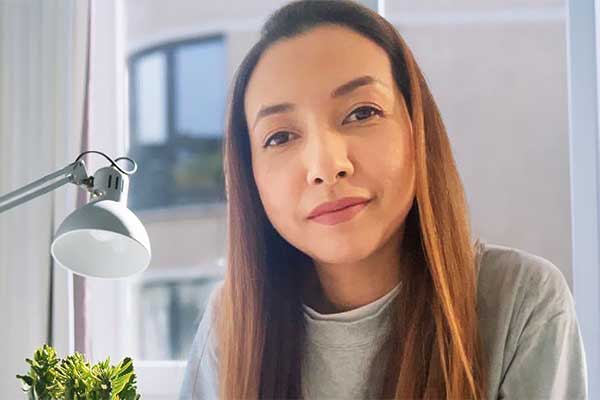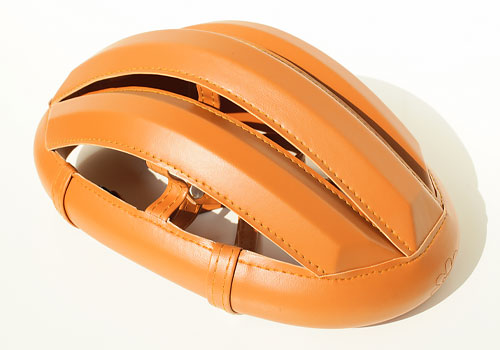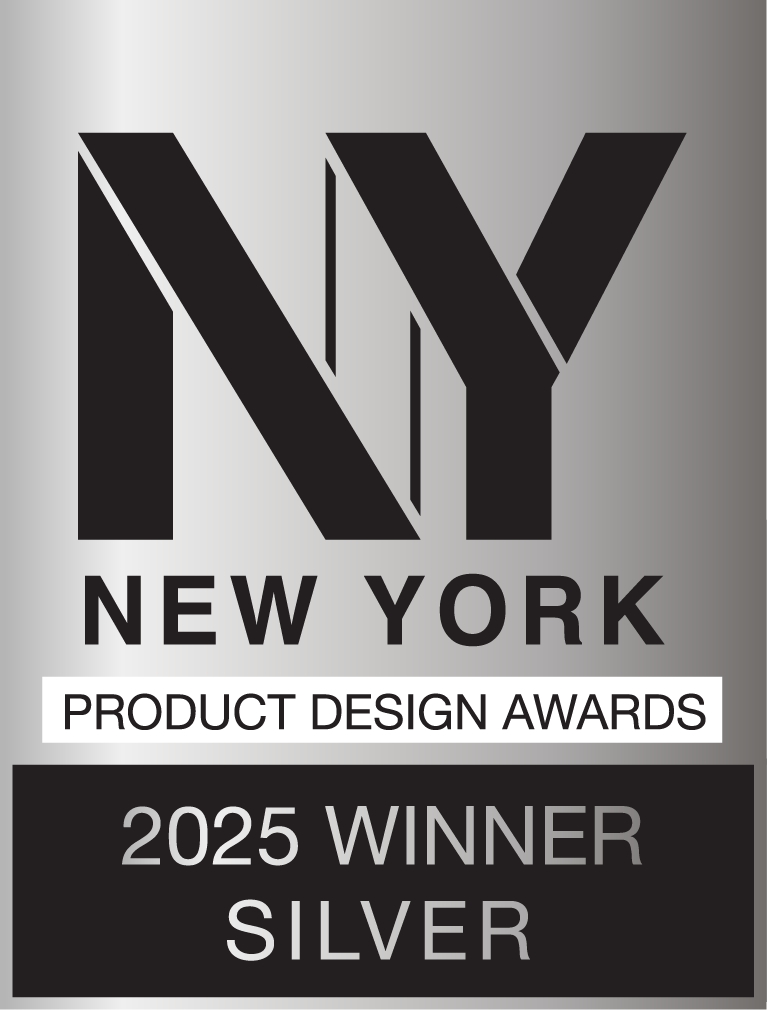
Krittika Bhekasut
1. Congratulations on winning the NY Product Design Awards! Can you introduce yourself and share about what inspired you to pursue design as a career?
Thank you so much—it’s truly an honor to receive this award. My name is Krittika Bhekasut, and I’m the founder of SPIN, a design-focused studio specializing in handcrafted, foldable vintage bicycle helmets. I designed these helmets with a passion for blending aesthetic heritage with modern functionality—an idea at the heart of our work.
My design journey wasn’t traditional. I was inspired by design’s power to tell stories, preserve cultural heritage, and solve real-world problems. When I saw a gap in the market—where beauty, nostalgia, and safety could coexist—I knew there was something meaningful to create. What began as a small idea crafted in our home studio has become an international conversation about style, memory, and protection. That’s what drives me every day: the belief that good design can be both beautiful and deeply purposeful.
2. What does being recognized in the NY Product Design Awards mean to you?
Being recognized by the NY Product Design Awards means so much to me—not just as a designer, but as someone who has poured years of heart, time, and belief into a vision that started from scratch. It’s an affirmation that our work, which honors vintage aesthetics while pushing the boundaries of functionality, resonates beyond our local community and speaks to a global audience.
This award is also deeply personal. As a Thai designer working on a niche product with cultural roots and safety innovation, the journey can sometimes feel uphill. Receiving this recognition makes me feel seen. It tells me that stories like ours—crafted with care, inspired by heritage, and committed to making a difference—have a place on the world stage. It motivates me to keep creating with even more intention and courage.
3. How has this achievement impacted your career, team, or agency, and what opportunities has it brought so far?
This award has brought a wave of encouragement—not only to me but to everyone who has supported and believed in our vision from the very beginning. It has opened doors to new conversations with collaborators, media outlets, and potential partners who might never have discovered our work otherwise.
For our small but passionate team, this recognition is a powerful reminder that even handcrafted, niche innovations can make a global impact. It has boosted our confidence and validated our product as something not only unique but also worthy of serious design recognition.
Most importantly, it inspires us to keep moving forward—because now we know our message and mission are truly being heard.
4. What role does experimentation play in your creative process? Can you share an example?
Experimentation is at the heart of everything I do. For me, design isn't just about how something looks—it’s about discovering new possibilities through trial and error. With a product like our foldable vintage bicycle helmet, experimentation was crucial in finding the balance between style, safety, and functionality.
One example is the folding mechanism. We didn’t want it to feel bulky or compromise the vintage silhouette, so we went through many iterations—testing different materials, hinges, and internal structures. Some prototypes looked beautiful but didn’t meet safety standards, while others were functional but lost the charm we were aiming for. It took years of refining before we found the right formula that allowed the helmet to fold compactly while maintaining its nostalgic character and protective purpose.
Through that process, I learned that experimentation isn’t failure—it’s learning in motion. It keeps the work alive and evolving.
5. What's the most unusual source of inspiration you've ever drawn from for a project?
One of the most unusual—but meaningful—sources of inspiration came from an old photograph of my grandfather riding a bicycle through the Thai countryside. He wore no helmet, just a soft cap, but there was something timeless about the image—freedom, elegance, and quiet resilience. That photo sparked an idea: what if we could preserve that feeling, but bring it into the modern world with safety in mind?
It led me to explore early 20th-century cycling culture, vintage racing gear, and antique leather accessories. I drew inspiration from old aviator caps, military headgear, and handcrafted saddlery. These weren’t typical design references, but they helped shape the form, texture, and spirit of our helmet.
That single photo reminded me that inspiration can come from emotion and memory—not just trends or market research.
6. What’s one thing you wish more people understood about the design process?
I wish more people understood that the design process isn’t a straight line—it’s a journey of constant exploration, adjustment, and emotional investment. Good design takes time. It’s not just about making something look beautiful; it’s about solving problems in a meaningful and lasting way.
Behind every product—especially one like ours—are countless decisions about materials, ergonomics, safety, history, and user experience. There are moments of doubt, discovery, and dozens of discarded ideas. Sometimes, the simplest detail takes months to get right.
Design isn’t just decoration—it’s intention. And when people understand that, they begin to see the depth behind even the smallest object.
7. How do you navigate the balance between meeting client expectations and staying true to your ideas?
For me, it starts with listening—truly understanding what the client values and what they hope to achieve. From there, I look for common ground where my design principles align with their goals in a way that feels authentic and meaningful.
Staying true to my ideas doesn’t mean being inflexible; it means protecting the core purpose of the design. With our foldable vintage helmet, for example, some clients wanted more modern features or customization. While I’m committed to preserving its vintage character and timeless charm, we offer a range of color options to suit different personalities and preferences—without compromising the essence of the design.
By sharing the story and intention behind each element, I’ve found clients often gain a deeper appreciation for the original vision. In the end, it’s about creating something both designer and client can be proud of—a design with soul, not just surface.
8. What were the challenges you faced while working on your award-winning design, and how did you overcome them?
One of the biggest challenges was finding the perfect balance between safety, aesthetics, and foldability. Traditional helmets focus mainly on function, while our goal was to create something that also carried emotional value—something people would want to wear because it looked and felt like part of their lifestyle, not just a safety requirement.
Technically, designing a helmet that folds without compromising structural integrity took years of trial and error. We tested many materials, mechanisms, and inner structures to achieve the right combination of flexibility and strength. Some prototypes were too fragile, others lost the vintage shape we cared so much about.
Another challenge was credibility. As an independent designer from Thailand working on an unconventional product, it wasn’t easy to gain recognition or be taken seriously at first. But we stayed patient, kept improving, and let the quality of the product speak for itself.
In the end, every obstacle became part of the story. And I believe that’s what made the final design stronger—not just in form, but in spirit.
9. How do you recharge your creativity when you hit a creative block?
When I hit a creative block, I step away and reconnect with the world outside of design. Sometimes that means a quiet bike ride, visiting a local market, or simply spending time in nature. These small moments help clear my mind and reset my energy.
I also love revisiting old objects—vintage tools, crafts, or photographs. They remind me why I started and often spark new ideas in unexpected ways. Creativity, for me, doesn’t always come from thinking harder—it comes from feeling more, observing more, and giving myself permission to pause.
When I return to the work, I usually see things with fresh eyes. Even the problems that once felt overwhelming start to look like new opportunities.
10. What personal values or experiences do you infuse into your designs?
Every piece I design carries part of my story—my values, my culture, and a deep respect for craftsmanship. Growing up in Thailand, I was surrounded by traditional artisans and found beauty in the simplest things. That taught me to value patience, intention, and the emotional connection we have with everyday objects.
Respect for the past is central to my design philosophy. Our helmet was born from a desire to preserve the elegance of vintage cycling while introducing modern safety and practicality. Honoring history doesn’t mean staying stuck in it—it means learning from it and reimagining it for the future.
I also value empathy. I try to design not just for how things look, but for how people feel—confident, connected, and seen.
11. What is an advice that you would you give to aspiring designers aiming for success?
Don’t be afraid to start small, and don’t wait for things to be perfect before you begin. Success in design doesn’t always come from the loudest ideas—it often comes from the most honest ones.
Be curious. Ask questions. Break things and rebuild them. But most importantly, stay true to your voice. Trends come and go, but your unique perspective is what will set your work apart.
Stay fresh and open-minded to every new thing. Inspiration can come from the most unexpected places, and sometimes a small spark can lead to a breakthrough idea. Being open allows you to grow, collaborate, and evolve beyond what you thought was possible.
Also, be patient. The journey can feel long and uncertain, especially when you're doing something different. But every sketch, every mistake, every late night adds up to something meaningful. Keep learning, keep showing up, and trust that your work will find its place.
And remember, design is not just what you make—it’s how you care.
12. If you could collaborate with any designer, past or present, who would it be and why?
If I could collaborate with any designer, it would be Dieter Rams. His philosophy of "less but better" deeply resonates with me. He had a remarkable ability to strip design down to its essence—making it timeless, functional, and beautiful without unnecessary complexity.
I admire how his work wasn’t just about aesthetics but about responsibility—designing with care for both people and the environment. A collaboration with someone like him would be a masterclass in clarity, precision, and purpose.
I’d love to bring that mindset into a conversation with heritage-inspired design, blending his modernist principles with the emotional warmth and storytelling of vintage aesthetics. I think it could create something both grounded and poetic.
13. What's one question you wish people would ask you about your work, and what's your answer?
I wish more people would ask: “What emotion do you want people to feel when they use your design?”
My answer would be: a sense of connection. I want people to feel like they’re part of something bigger—something that respects the past, values craftsmanship, and brings beauty into everyday life. With our vintage foldable helmet, I don’t just want users to feel safe—I want them to feel seen, stylish, and proud of what they’re wearing.
Design, to me, is about creating moments that matter. Even a small detail can carry a story, a memory, or a piece of someone’s identity. If I can help people feel that connection, then I know I’ve done my job.

